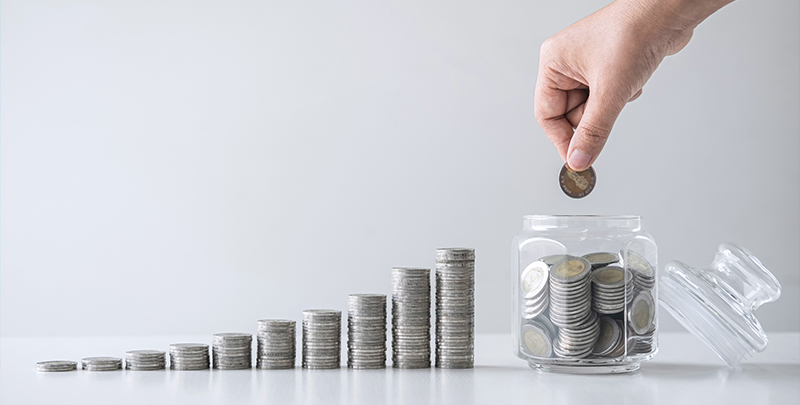When it comes to managing your personal finances, one of the most important questions is, “How much money should I
keep in my Savings account ?” Maintaining the right balance is
essential for financial stability and peace of mind.
It helps you keep funds readily available for unforeseen expenses or emergencies. After all, your savings are your
ally, not just a stagnant pool.
Rule of 50-30-20
The 50-30-20 budgeting principle is widely accepted and assists in effectively managing your income. It encourages
prioritising savings and debt reduction while allowing discretionary spending on wants. Your income is divided into
three categories:
1. 50% towards your needs
Allocate half of your income to fulfil essential needs such as rent, utilities, groceries, and transportation. This
ensures that you maintain a stable and comfortable lifestyle.
2. 30% towards your wants
Designate 30% of your income for discretionary desires on non-essential items like dining out, entertainment, and
luxury purchases. This allows you to enjoy life without affecting your financial security.
3. 20% towards your savings
Reserve 20% of your income for savings, including contributing to retirement funds and building an emergency fund.
This ensures you are prepared for unexpected expenses and can work towards your long-term financial goals.
Though this guiding principle effectively manages your finances, don’t forget to adapt it to your reality. For
instance, if your loan takes up a higher percentage of your income, you can adjust in the other areas.
Building an emergency fund
Financial stability is truly achieved when you have built an emergency fund. This dedicated money that you save can
be your safety net during unexpected circumstances like medical emergencies, job loss, or even an appliance failure.
Calculating 6 to 12 months’ worth of living expenses is recommended as an appropriate amount for such a fund.
You can start small, even with ₹500 per month, and gradually increase it. For instance, you can start by opening an
Axis Bank AMAZE Savings Account, a
zero-balance account where you can sign up for just ₹200 per month. The discipline of setting aside money to keep in
a Savings Account monthly can shield you from all future financial emergencies.
How much cash should I keep on hand?
It is important to have cash readily available to balance convenience and security. You need to allocate a modest sum
to cover daily expenses, emergencies, or situations where online or card transactions are not a feasible option.
Firstly, analyse your typical cash-based needs and maintain the amount on hand that aligns with your lifestyle.
Carrying excessive cash can invite security risks, so it’s important to strive for balance. So, how much cash should
you keep in your Savings Account or hand? It's a decision that depends on your individual situation and lifestyle.
Keep inflation in mind
Factoring in inflation is crucial when deciding how much money to keep in your Savings Account. In India, the annual
inflation rate is typically higher than the interest rates offered by Savings Accounts. Thus, it also makes sense to
diversify your
savings into other products like fixed deposits,
which relatively offer higher returns. When you consider the potential impact of inflation on your financial goals,
you can begin adjusting your savings strategy to meet your current spending needs and maintain the value of your
funds.
Assess your financial situation
Assessing your financial situation is a pivotal step in knowing how much can you keep in your Savings Account, for
emergency funds, or spending. There’s no one-size-fits-all number, as every individual’s financial situation is
unique. You need to regularly assess your income, expenses, risk tolerance, and goals to tailor your savings
strategy. There are always going to be life changes, job changes, and unexpected events that impact your financial
landscape. So keep evaluating and adapting to make informed decisions about optimising your savings for short-term
stability and long-term financial goals.
Also Read: Guide to the
cash deposit limit in a Savings Account
Conclusion
It is important to understand that saving is a continuous journey, and determining the right Savings Account balance
requires a strategic approach. Start small, keep tracking your progress, and make changes as life unfolds. You can
build a secure financial future by making one smart saving decision at a time!
Disclaimer: This article is for information purpose only. The views expressed in this article
are personal and do not necessarily constitute the views of Axis Bank Ltd. and its employees. Axis Bank Ltd.
and/or the author shall not be responsible for any direct / indirect loss or liability incurred by the reader
for taking any financial decisions based on the contents and information. Please consult your financial advisor
before making any financial decision.








